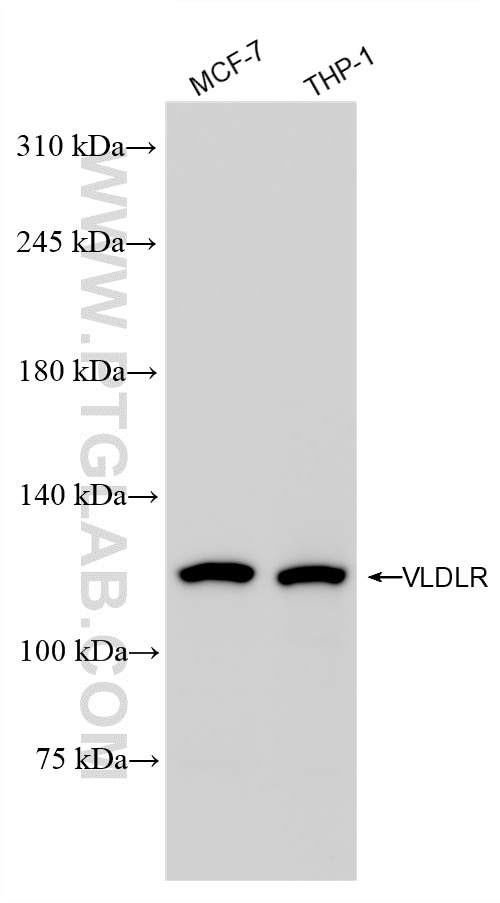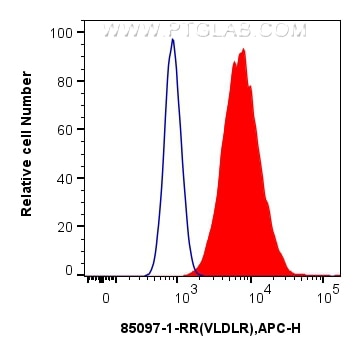Validation Data Gallery
Tested Applications
| Positive WB detected in | MCF-7 cells, THP-1 cells |
| Positive FC (Intra) detected in | THP-1 cells |
Recommended dilution
| Application | Dilution |
|---|---|
| Western Blot (WB) | WB : 1:5000-1:50000 |
| Flow Cytometry (FC) (INTRA) | FC (INTRA) : 0.25 ug per 10^6 cells in a 100 µl suspension |
| It is recommended that this reagent should be titrated in each testing system to obtain optimal results. | |
| Sample-dependent, Check data in validation data gallery. | |
Product Information
85097-1-RR targets VLDLR in WB, FC (Intra), ELISA applications and shows reactivity with human samples.
| Tested Reactivity | human |
| Host / Isotype | Rabbit / IgG |
| Class | Recombinant |
| Type | Antibody |
| Immunogen |
Peptide 相同性解析による交差性が予測される生物種 |
| Full Name | very low density lipoprotein receptor |
| Calculated molecular weight | 96 kDa |
| Observed molecular weight | 120 kDa |
| GenBank accession number | NM_003383 |
| Gene Symbol | VLDLR |
| Gene ID (NCBI) | 7436 |
| Conjugate | Unconjugated |
| Form | |
| Form | Liquid |
| Purification Method | Protein A purfication |
| UNIPROT ID | P98155 |
| Storage Buffer | PBS with 0.02% sodium azide and 50% glycerol{{ptg:BufferTemp}}7.3 |
| Storage Conditions | Store at -20°C. Stable for one year after shipment. Aliquoting is unnecessary for -20oC storage. |
Background Information
The very low-density lipoprotein receptor (VLDLR) is a member of the LDL receptor family with a complex molecular weight profile due to post-translational modifications. The calculated molecular weight of the core protein is approximately 84-86 kDa, however, VLDLR undergoes extensive glycosylation during processing, resulting in higher apparent molecular weights observed in SDS-PAGE analyses. Multiple studies report that glycosylated VLDLR migrates as broad bands between 90-180 kDa under reducing conditions, with the most commonly observed forms at approximately 96 kDa (core glycosylated form), 115-135 kDa (mature fully glycosylated form), and 150-180 kDa (hyperglycosylated or dimeric forms).


